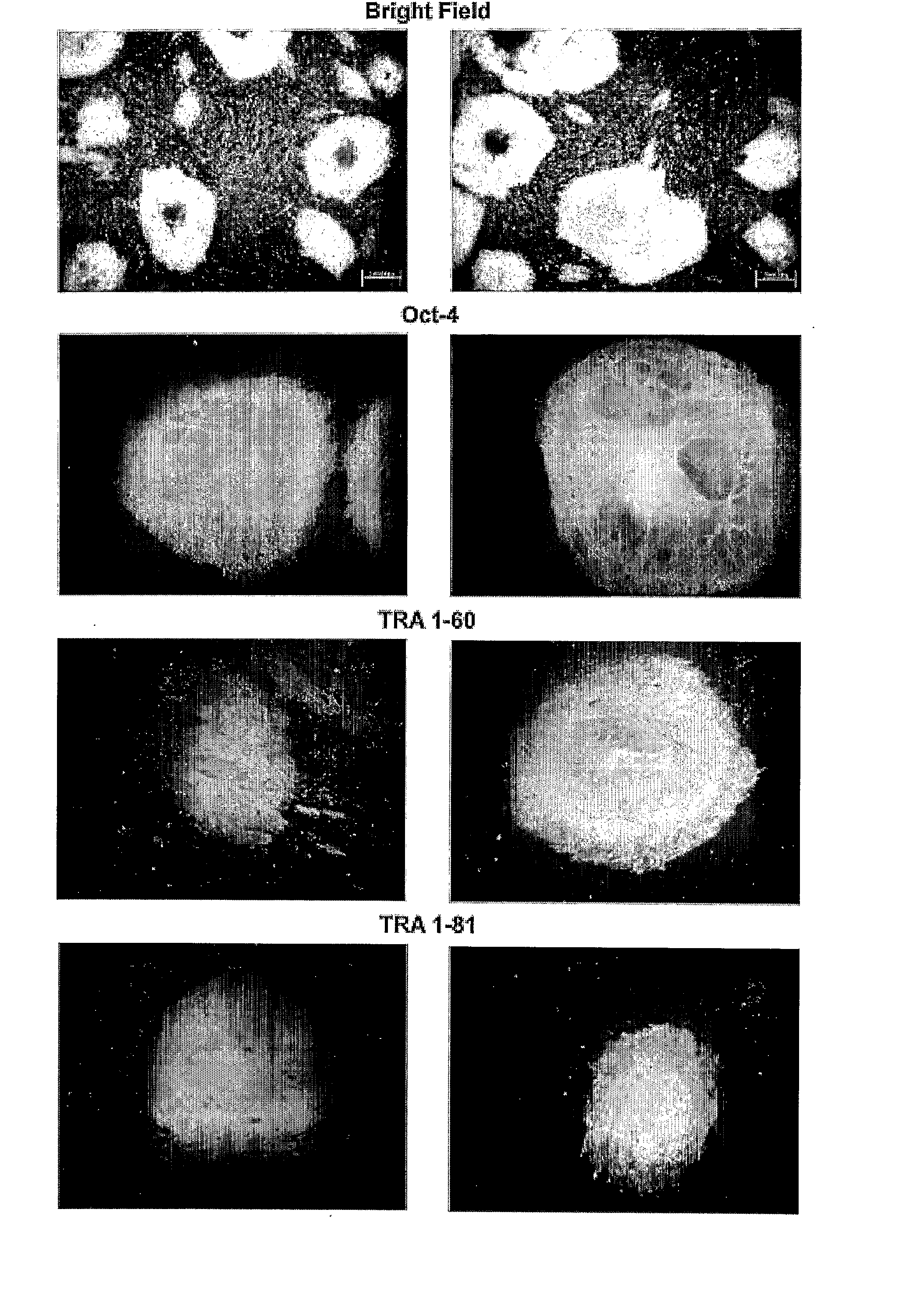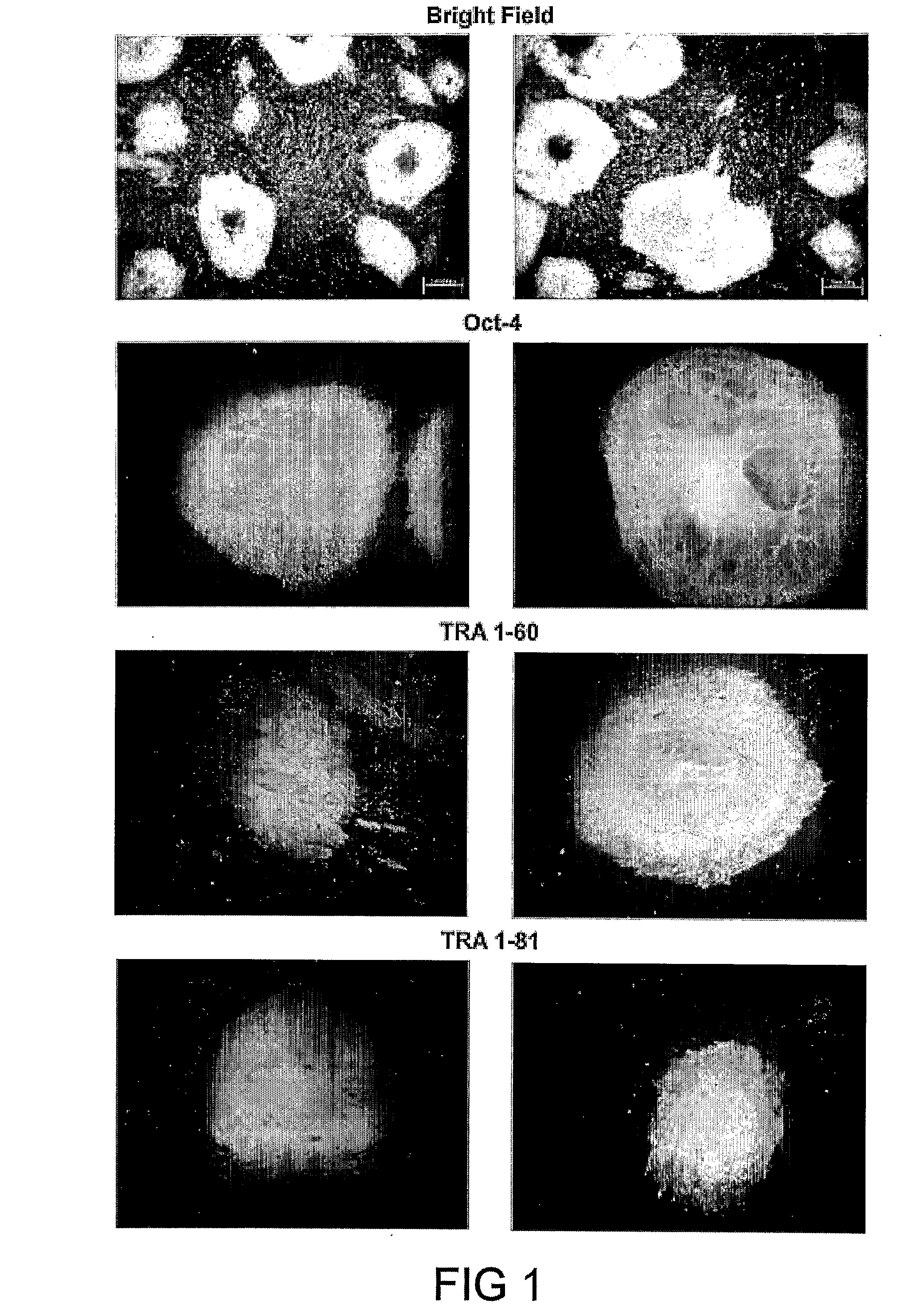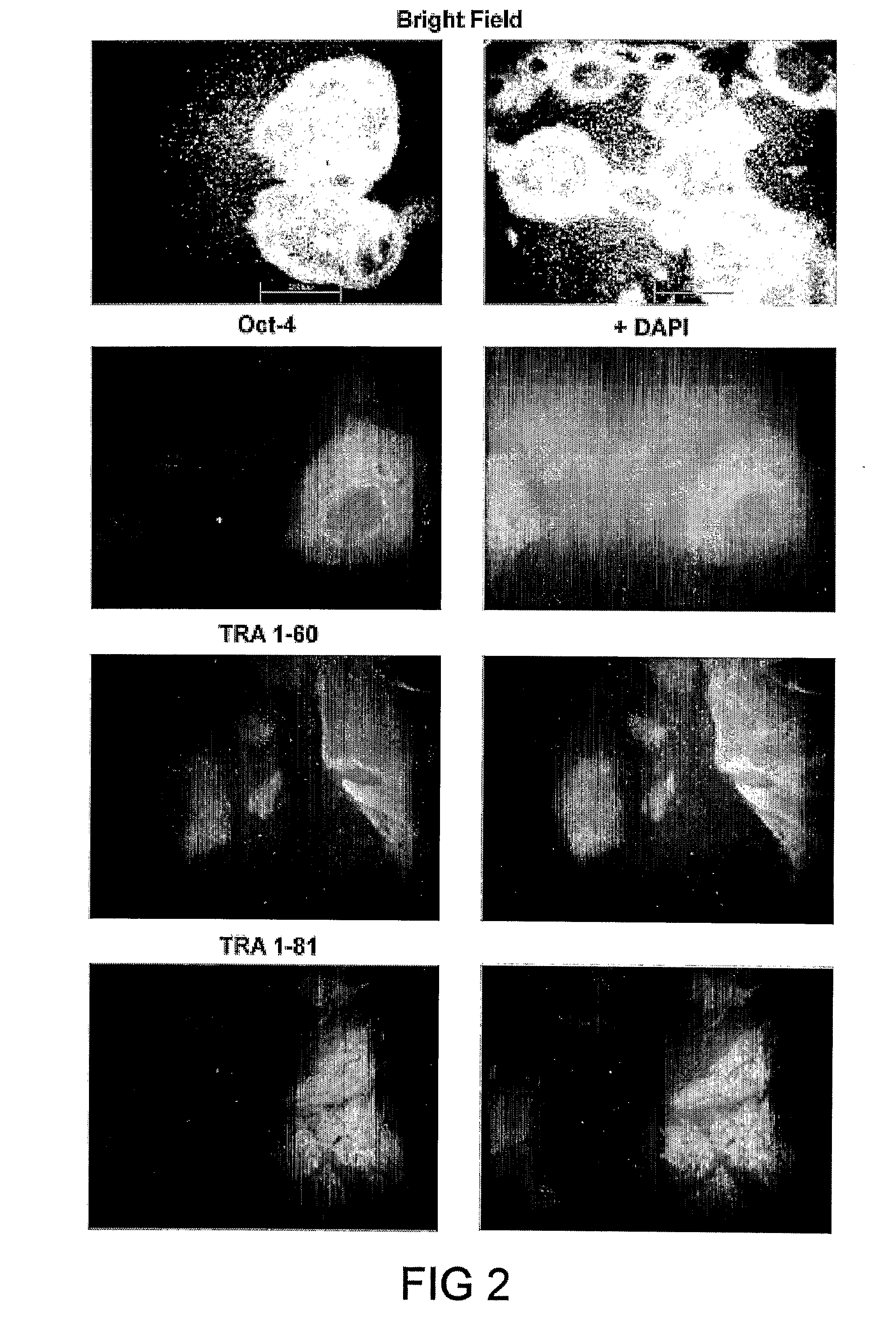Cell Preservation Method
- Summary
- Abstract
- Description
- Claims
- Application Information
AI Technical Summary
Benefits of technology
Problems solved by technology
Method used
Image
Examples
example 1
Preparation and Cryopreservation of hESCs
[0068] The methods were performed in a laboratory having standard cell biology equipment (biosafety hoods, pipettes, aspiration pumps, 5% CO2 incubator at 37° C., 70% ethanol spray, centrifuge, tubes, dissecting microscope with warm stage, liquid nitrogen storage vessel etc). Before commencing the methods, the following reagents were prepared: live hESC colonies, hESC culture media (hESC media), Phosphate Buffered Saline (PBS; Gibco catalogue number 14040-133), Collagenase IV (20 mg / ml stock prepared in-house; Serva catalogue number 17458.03), Dimethylsulfoxide (DMSO; Sigma-Aldrich product number D1435 / D2650), and CRYOSTOR CS5™ Cryopreservation Solution (BioLife Solutions catalogue number 99-610-DV). The hESC media consisted of 20% KnockOut Serum Replacement comprising bovine serum albumin (Invitrogen / Gibco, catalogue number 04-0095) or human serum albumin, 78% KnockOut DMEM (Invitrogen / Gibco, catalogue number 10829-018), 1% L-Glutamine (Inv...
example 2
Freezer Program Incorporating Manual Ice Nucleation
[0077] The following program was used with a Planer Biological Rate Freezer and included a manual ice nucleation step.
RATESTEPFROMTO(° C. / TIME(RAMP)(° C.)(° C.)MIN)(MIN)DESCRIPTION1.+4+405HOLD2.+4−8−1.0Cold activation3.−8−805Soak4.−8−80Manual ice nucelation5.−8−805Hold after ice nucleation6.−8−38−0.8Dehydration7.−38−100−10.0Pre-plunge rapid cool8.−100−180−35.0Plunge
example 3
Freezer Program Incorporating Automated Ice Nucleation
[0078] The following freezing program was used with a Planer Biological Rate Freezer, and including a automatic ice nucleation step.
PUM
 Login to View More
Login to View More Abstract
Description
Claims
Application Information
 Login to View More
Login to View More - R&D
- Intellectual Property
- Life Sciences
- Materials
- Tech Scout
- Unparalleled Data Quality
- Higher Quality Content
- 60% Fewer Hallucinations
Browse by: Latest US Patents, China's latest patents, Technical Efficacy Thesaurus, Application Domain, Technology Topic, Popular Technical Reports.
© 2025 PatSnap. All rights reserved.Legal|Privacy policy|Modern Slavery Act Transparency Statement|Sitemap|About US| Contact US: help@patsnap.com



